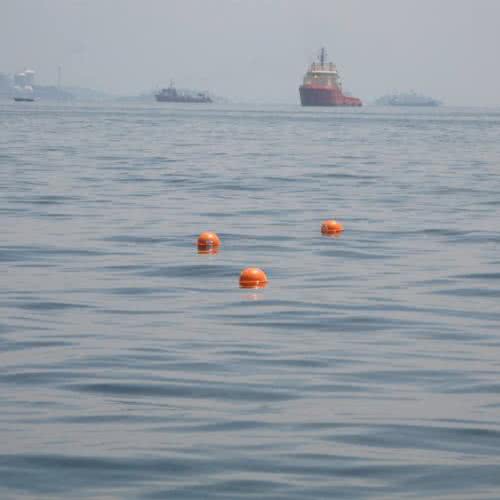Western Canada Marine Response Corporation (WCMRC) has added a new technological tool to its inventory of oil spill surveillance equipment. Manufactured by MetOcean Data Systems Ltd., the Iridium Oil Spill and Current Tracking Buoy, or iSphere, is an ocean drifter designed to track ocean surface currents and substance concentrations, while providing sea surface temperature and global position data via satellite transmission.
This tracking buoy is designed to float in water, where it is manipulated by current, tide and wind in such a way that mimics how oil behaves on the surface of water. To track the likely course of an oil spill, the buoy is deployed as close to the source as possible and ideally in the thickest concentration of the uncontained slick. Once the device is activated, it immediately begins to transmit real-time GPS and sea surface data via satellite, which can be viewed on a website that is provided by the manufacturer.
The technology is proving to be invaluable to WCMRC. Recently, the iSphere was involved in training exercises in Prince Rupert, and now the organization is in the process of purchasing more tracking buoys so that each WCMRC response base and certain response vessels will be equipped with them. WCMRC is trying to determine whether it would be possible to integrate the data generated by the tracking buoy into its mapping applications. If both sets of data can be combined, it will produce a more effective and comprehensive picture of what happens during an oil spill.
The most important feature of this innovative oil spill surveillance technology is that it will allow WCMRC to establish itself as a more self-sufficient organization. By investing in their own surveillance capacity, the response teams no longer will have to rely on external agencies to provide them with necessary data. With the iSphere, the data can be produced in-house, which, in turn, will reduce the time that it takes to respond to an emergency. If larger agencies are not participating in a small-scale spill or if certain monitoring resources cannot be used at night (i.e., aircraft overflights), WCMRC can expedite the cleanup process by deploying the tracking buoy, which will provide responders with the most accurate and timely data that they need to do their job as efficiently as possible.

